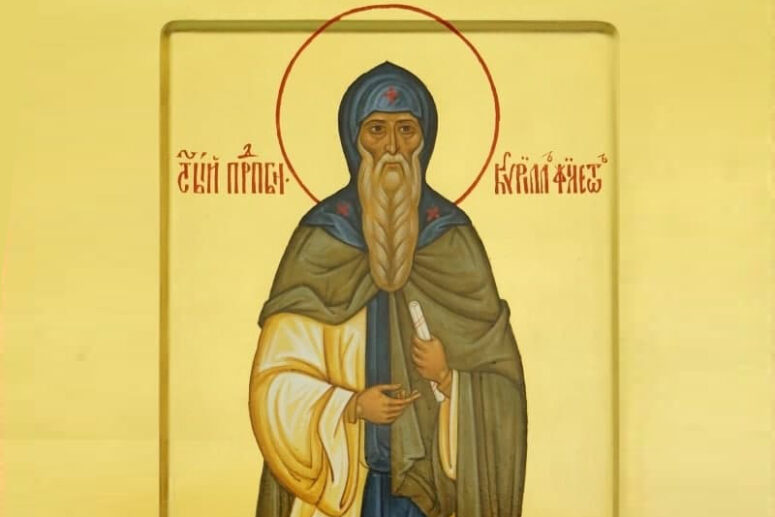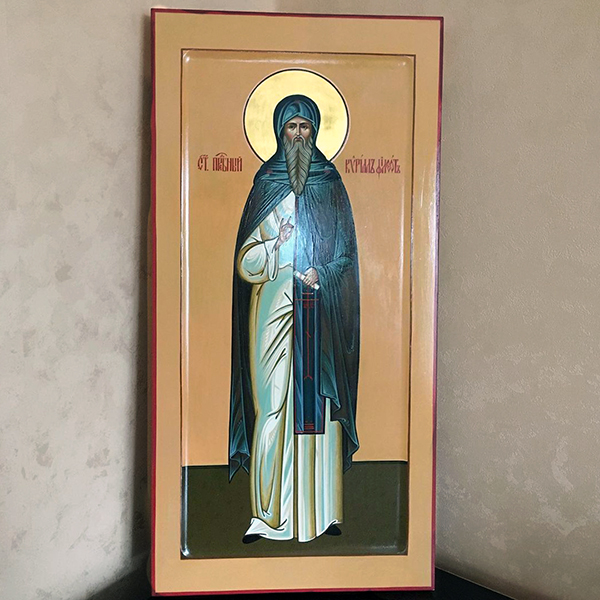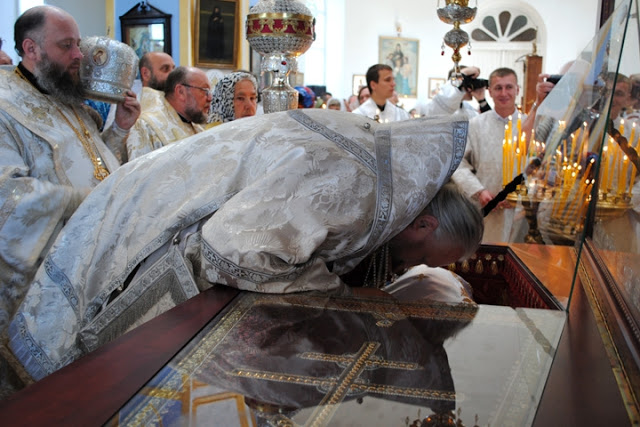
Most known venerable saints joined monasteries, took vows and then constrained themselves to great ascetic deeds for Christ’s sake. But God disposes the life of each saint in a particular way. Venerable Cyril is unique in the fact that he embarked on a monastic path of an ascetic, living a worldly life next to his wife and children. How did he manage it? Find out from this article.
Childhood and Youth
Venerable Cyril (his worldly name was Kyriakos) lived in the 11th century. in a village near the city of Derkis in Ancient Thrace (modern Greece). Thanks to his pious parents, he studied the Holy Scriptures from childhood and surpassed his peers in wisdom. Serving as a reader in the temple, he spent all his free time reading holy books, singing psalms and praying on his knees. Many noticed that he seemed to be enlightened by God Himself. Some revered him and called him “a young elder”, while others condemned him. Hearing them, Kyriakos, would say to himself, “Evade praise and be ashamed of condemnation.” With an eye only to God, blessed Cyril did not hold a grudge against anyone and did not accept any praise.
During the divine services, Kyriakos served God so zealously as a reader that the God-loving parishioners, as well as the local bishop begged him to become a priest. But Kyriakos humbly considered himself unworthy of the priestly dignity. He said: “It is good to lend a helping hand to someone who is falling, if you yourself can not fall with him. <…> Not all of us should be saving others, but surely we all should be saving ourselves.”
The Righteous Marriage
At the age of 20, the future saint got married with the view of child-bearing, rather than seeking pleasure. The spouses were of the same mind and way of life.
After the birth of their son, blessed Kyriakos spoke with his wife about chastity: “It is inappropriate for us to have less reason than dumb animals that mix with the opposite sex at a certain time once a year, while we, being “reasonable”, often do it for the sake of voluptuousness, which I call debauchery. <…> A chaste person is not one who abstains from forbidden pleasures, but one who avoids the permitted ones. <…> We should not be afraid of the height of abstinence, fearing more the depth and abyss of intemperance.” After listening to St Cyril’s arguments, his wife agreed with him, and from that time on they embarked on the path of a chaste life.
Knowing that carnal passions cannot be overcome by someone guilty of gluttony, Kyriakos began to fast according to the canons. Gradually he gave up wine and began to eat dry food once a day on weekdays, allowing himself some relaxation only on holidays, as well as Saturday and Sunday.
The venerable spent all his time in vigils, readings and prayer, so that his mind would remain vigilant and open to spiritual instructions.
His chaste wife supported Kyriakos in his exploits, zealously following him as much as she could.

Holding a Course for Monasticism
Learning more and more about the life and deeds of genuine monks, Kyriakos also wished to renounce the world to serve God.
Understanding that the beginning and the foundation of monasticism was obedience, he wanted to test himself in it. To do this, he got a job on a ship, where he pledged to serve the captain and the crew for three years, carrying out even their most dishonorable assignments. When they frantically mocked and reviled him, he rejoiced, as if he were acquiring treasures. Accepting reproaches as a cure for pride, the saint prayed for those scoffing at him, as if they were his doctors.
When the ship moored to land, the blessed seaman would come ashore on some errand, and after completing it, go to a deserted place where he could pray on his knees. If he was troubled by some sinful thought, Kyriakos mercilessly beat himself with a stick or a rope tearfully asking for God’s help until his bleeding wounds helped him conquer the temptation. After that the saint returned to the ship.
By the end of the third year, the venerable’s body was so tired of fasting, beating, and cold weather (he always walked barefoot and in light clothes) that Kyriakos could no longer carry out his assignments. Soon the ship arrived at his home port, and Kyriakos returned to his wife. He told her that now he was to either join a monastery or, by obedience to her, continue living with his family. Despite the saint’s strong desire for the former, his wife persuaded him to stay.
Monasticism in the World
Kyriakos made himself a small cell in his house, where he spent many years in silence, prayer and fasting. He did handicrafts, weaving networks for neighbors without any payment. The venerable once said, “If your hands are busy with work, your tongue should be singing praise, and your mind should be praying. <…> If you want the creations of your hands to be pleasing to God, and not to the world, then give them to the poor.”
The saint loved to help the sick and the poor. He often received pilgrims, seeing Christ in everyone he met.
For a long time, Kyriakos happily wore iron chains, which formed fetid wounds on his body. For this, the Lord rewarded him with the gift of comforting tears.
The saint often went into the desert, where he would spend several days in silence, not eating any food.
When his brother took monastic vows and founded the monastery of Christ the Savior near his native village, Kyriakos helped him arrange the pattern of life for the brethren. From time to time he visited and instructed the monks.
Finally the day came when the venerable was tonsured at the aforementioned monastery with the name Cyril. This was not the end of his great exploits. St Cyril lived to a great age and was horribly tempted by the devil on his deathbed. Having endured all the trials of his life’s path, he imitated Christ in holiness, and was glorified by Him both in the kingdom of heaven and on earth.
Source: http://www.biblioteka3.ru/biblioteka/paterik/eklog_2/txt11.html




